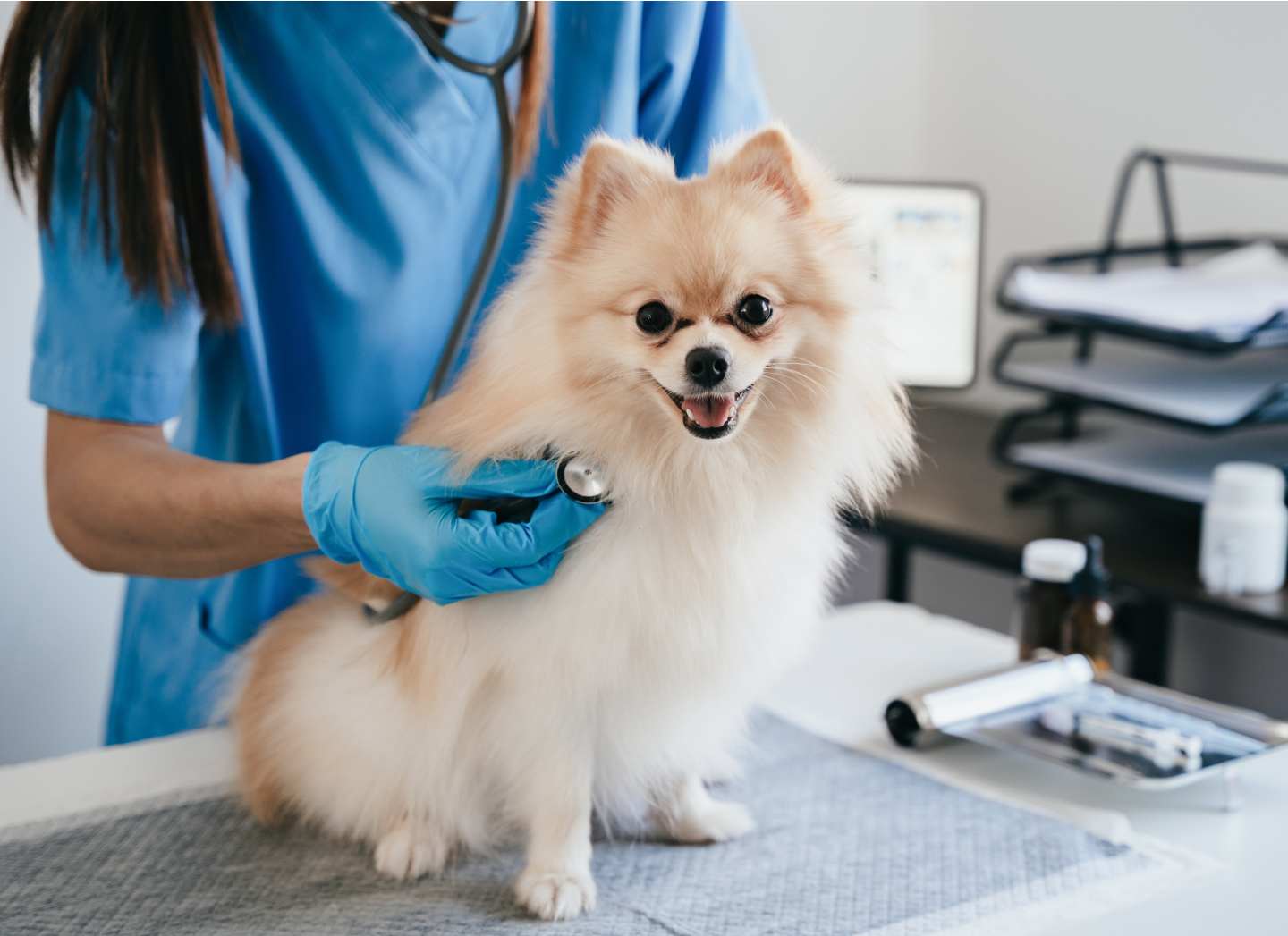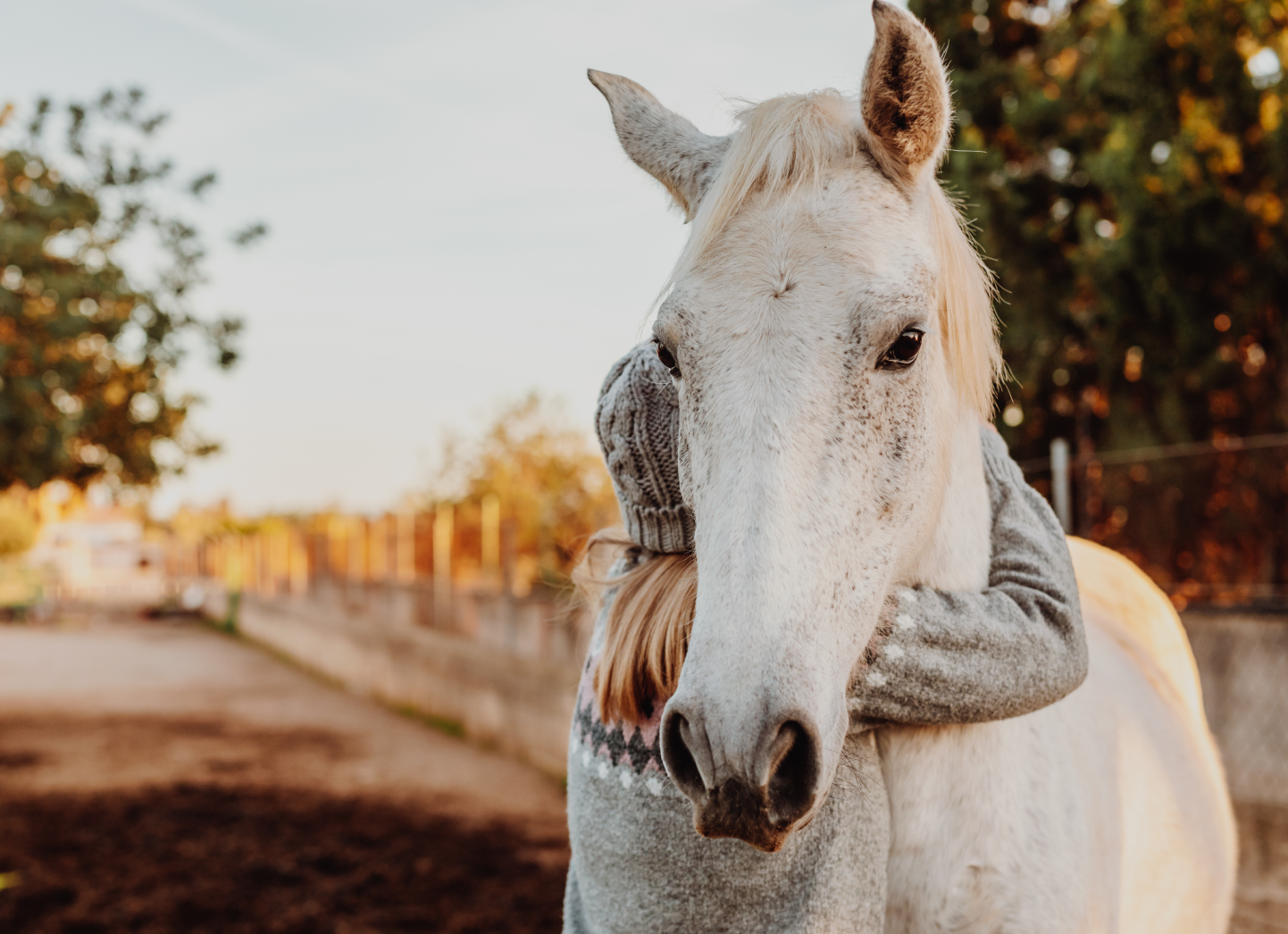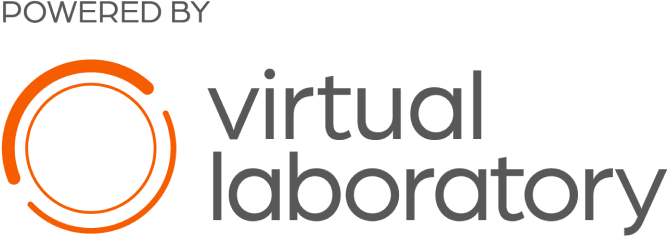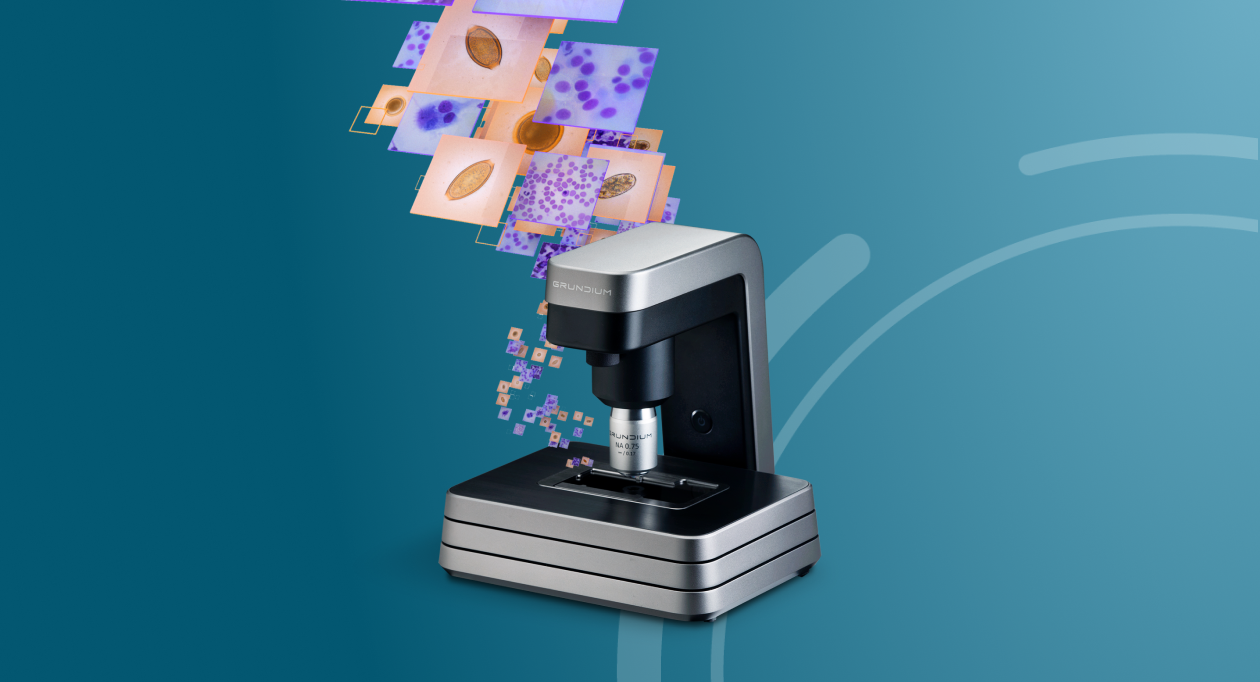In-office fecal testing for on-demand treatment solutions
- AI-powered analysis for actionable results in the clinic
- Tailored slide preparation for consistent results
- Specialist support in the evaluation of challenging cases
- Detects specific parasitic ova, cysts and oocysts for dogs and cats1
- Identifies Roundworms, Hookworms, Whipworms, Giardia, Cystoisospora, Taeniidae and Eimeria1
- Fast, simple setup for maximum efficiency
Part of the complete, in-clinic parasitology solution
Efficient, reliable data
AI-driven analysis with high performance accuracy comparable to that of diagnostic parasitology experts guides diagnosis and treatment selection in dogs and cats.1,2
Optimal workflow
Maximize efficiency at critical moments in the patient care continuum with clean, simple sample preparation using pre-filled solution vials to avoid evaporation or crystallization.
Advanced patient care
Overcome limitations of traditional fecal centrifugation, such as messy testing techniques and inconsistent results, so you can provide continuous care with fewer delays to more patients.
How it works
- Comprehensive routine parasitic screening
- Identify harmful hookworms and roundworms that can impact the health of pet owners3,4
- Minimize environmental contamination from potentially harmful parasites5
- Reduce inconsistencies associated with traditional testing methods6
- Maximize detection of infection
Reliable fecal insights at the point of care
The proof is in the data — explore the accuracy and reliability of Vetscan Imagyst® AI Fecal to see how testing sensitivity and specificity holds up to that of parasitology experts.1,2,7






AI Equine Fecal Egg Count analysis
Access accurate, efficient and shareable8 equine fecal egg count (FEC) analysis for strongyles and Parascaris spp. on the Vetscan Imagyst.
Frequently Asked Questions
The Vetscan Imagyst AI Fecal application will detect and quantify:
- Hookworms: Ancylostoma spp. in dogs and cats and Uncinaria stenocephala in dogs
- Roundworms: Toxocara spp. in dogs and cats
- Whipworm: Trichuris in dogs
- Tapeworms: Taeniidae in dogs and cats
- Coccidia: Cystoisospora and Eimeria spp. in dogs and cats
- Giardia in dogs and cats
Sources:
Nagamori Y, et al. Parasites Vectors 13, 346 (2020).
Nagamori Y, et al. Journal of Veterinary Diagnostic Investigation. 2023;0(0). doi:10.1177/10406387231216185
Data on file, Study No. DHX6Z-US-22-183, 2023, Zoetis Inc.
Data on file, Study No. DHX6Z-US-22-146, 2023, Zoetis Inc.
The Vetscan Imagyst fecal sample preparation device is an innovative, self-contained fecal parasite concentrator that allows for clean and efficient sample recovery.
The Vetscan Imagyst fecal preparation device provides a closed system with prefilled tubes to prevent contamination of the centrifuge.
A validation study was conducted to evaluate the performance of the Vetscan Imagyst fecal sample preparation device as compared to the recovery performance of a conventional centrifugal flotation reference method.
- Sample Tube and Scoop*
- Collection Tube and Cap*
- Stir Stick*
- Centrifuge capable of 500 RCF X 2 min
- Fecal Transfer Loop*
- Slide Template*
- Glass Slide*
- Coverslip with fiducials*
- Grundium Ocus®40 slide scanner
*Included with Vetscan Imagyst AI Fecal kit
Ocus is a registered trademark of Grundium Oy.
There are two different flotation solutions that are available for utilization with the Vetscan Imagyst, which include 33% Zinc Sulfate (ZnSO4) (SG 1.18) and Sheather’s Sugar (SG 1.28-1.30) solutions. Each are premeasured and pre-packaged in the Collection tubes.
Unfortunately, there is no fecal solution that is perfect for detection of all parasites, and advantages and disadvantages of each should be considered when selecting a solution for general use. This is summarized in the below table which was adapted from Veterinary Clinical Parasitology (9th ed.).
The 33% ZnSO4 solution included in the Giardia kits is the preferred flotation solution for identifying Giardia cysts. The solution is a less viscous, clear and transparent solution. With the Vetscan Imagyst system, only Giardia results will be shown when this solution is selected for use.
The Sugar solution is the preferred flotation solution for identifying common parasitic ova and oocysts. The solution is a more viscous, transparent solution with a light amber color. With the Vetscan Imagyst system, all targeted parasite results will be shown when this solution is selected for use.
Source:
Zajac AM, et al. Ames, Iowa: Wiley Blackwell. 2021. Pgs. 3-6.
Downloadable Resources
Looking for more information? Find what you need in our Resource Center.



Bringing specialist-level medicine to your clinic
The Zoetis Virtual Laboratory offers deeper insights through its unique portfolio of interconnected diagnostic products and services. Central to the Virtual Laboratory offering, Vetscan Imagyst connects innovative, in-clinic AI diagnostic testing with real human clinical pathology expertise, empowering confident treatment decisions and elevating patient care.
- Best-in-class AI
- Anytime* expert support
- Connected diagnostic insights



Explore the full Vetscan Imagyst portfolio
Multiple testing capabilities combined on a single analyzer for comprehensive, AI-powered insights at the point of care.
Discover the difference Vetscan Imagyst can make in your clinic
Contact us today to learn more about how our diagnostics portfolio can help you provide elevated patient care.
Customer Service, Support & Ordering
Mon – Fri: 8:30am – 6:30pm ET
Vetscan & i-STAT Technical Support
24 hours a day, 7 days a week, 365 days a year
1-888-963-8471
Zoetis Reference Laboratories Customer Service, Support & Ordering
Mon – Fri: 8:00am – 9:30pm ET
Saturday: 9:00am – 8:30pm ET
Sunday: Closed
1-888-965-9652
Need Technical Support?
Our support team is available to answer product questions and provide guidance.†
* Dependent on consultant availability.
† If you are a pet owner looking for treatment recommendations, please contact your veterinarian.
References: 1. Nagamori, Y., Hall Sedlak, R., DeRosa, A. et al. Evaluation of the VETSCAN IMAGYST: an in-clinic canine and feline fecal parasite detection system integrated with a deep learning algorithm. Parasites Vectors 13, 346 (2020). 2. Nagamori, Y., Sedlak, R.H., DeRosa, A. et al. Further evaluation and validation of the VETSCAN IMAGYST: in-clinic feline and canine fecal parasite detection system integrated with a deep learning algorithm. Parasites Vectors 14, 89 (2021). 3. Bowman DD, Montgomery SP, Zajac AM, et al. Hookworms of dogs and cats as agents of cutaneous larva migrans. Trends Parasitol. 2010;26(4):162-167. doi:10.1016/j.pt.2010.01.005. 4. Overgaauw PA, van Knapen F. Veterinary and public health aspects of Toxocara spp. Vet Parasitol. 2013;193(4):398-403. doi:10.1016/j.vetpar.2012.12.035. 5. Little SE. Helping protect the bond between clients and pets through parasite control. DVM360. Published May 2, 2019. Accessed August 13, 2021. https://www.dvm360.com/view/helping-protect-bond-between-veterinary-clients-and-pets-through-parasite-control. 6. Gates MC, Nolan TJ. Comparison of passive fecal flotation run by veterinary students to zinc-sulfate centrifugation flotation run in a diagnostic parasitology laboratory. J Parasitol. 2009;95(5):1213-1214. 7. Nagamori Y, Scimeca R, Hall-Sedlak R, et al. Multicenter evaluation of the Vetscan Imagyst system using Ocus 40 and EasyScan One scanners to detect gastrointestinal parasites in feces of dogs and cats. Journal of Veterinary Diagnostic Investigation. 2023;0(0). doi:10.1177/10406387231216185 8. Data on file, Study No. DHX6Z-US-22-131, 2022, Zoetis Inc.





